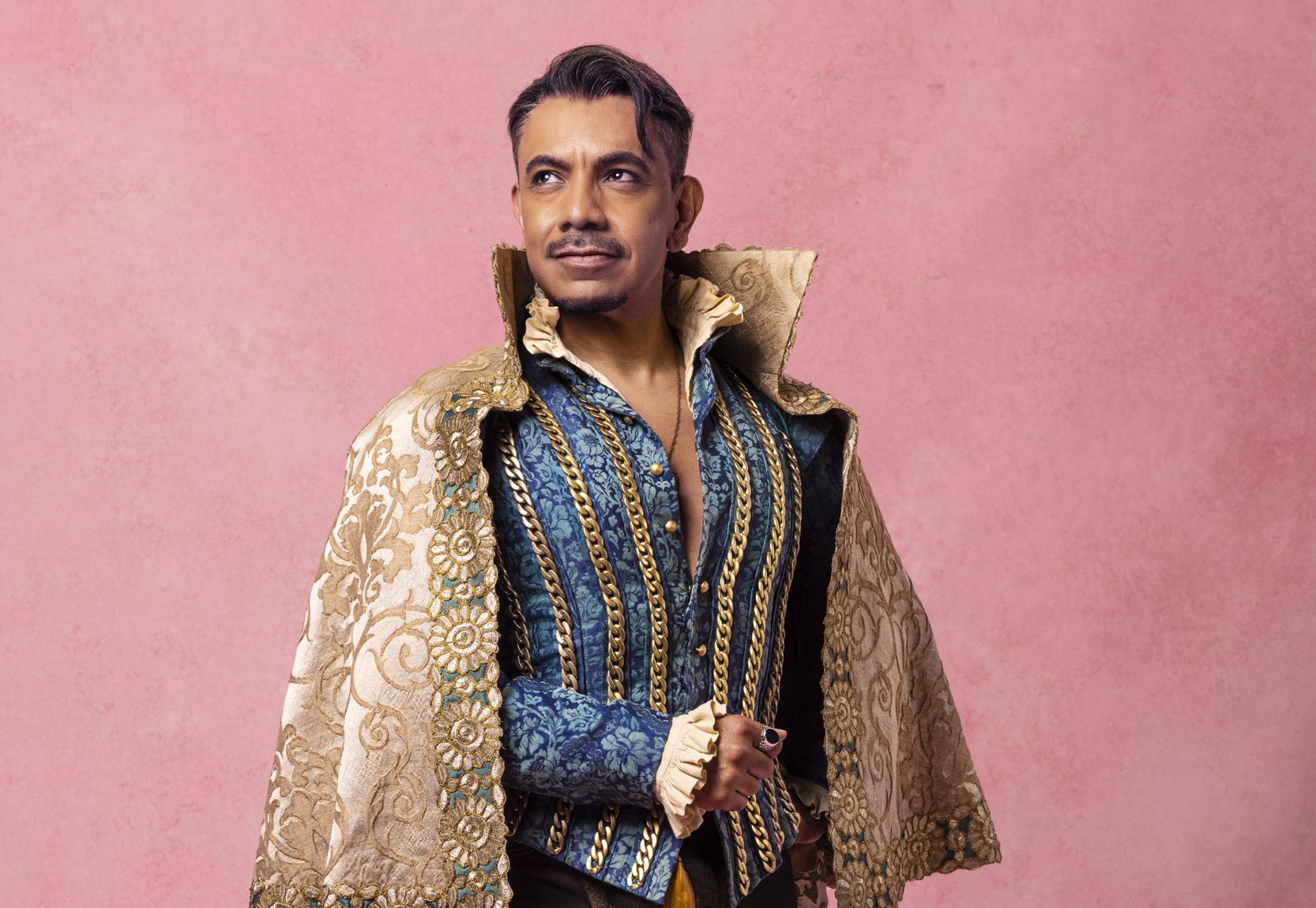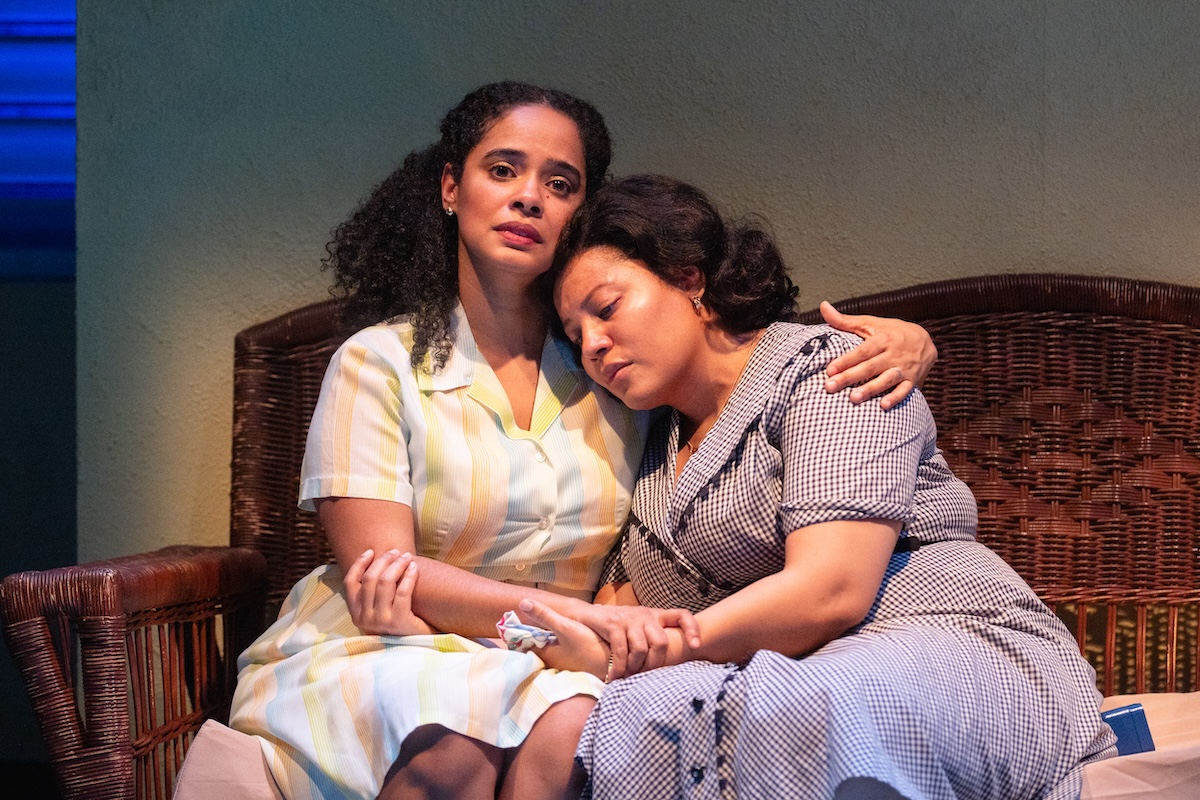Pacific Overtures

(Photo © Carol Pratt)
It may turn out that future generations of musical theater fans will come to know Stephen Sondheim’s Pacific Overtures as it has now been rendered by director Eric Schaeffer, stripped down and focused on its essential elements. It’s certainly fitting that, as the last show to be presented in Signature Theatre’s current home — a converted auto repair shop in which Schaeffer and company built a national reputation based in no small part on the 12 Sondheim musicals produced here over 14 years — , Pacific Overtures has been overhauled. Jonathan Tunick has updated and recalibrated his orchestrations down from 22 pieces to seven. The original Broadway cast of 39 has been streamlined to 10. Both Sondheim and writer John Weidman have collaborated with Schaeffer on making script changes, including an enhanced finale.
That’s not to say this challenging musical has finally been made perfect more than three decades after premiering on Broadway and confounding some of Sondheim’s fans, as well as his critics, The Signature production comes fairly soon after two revised versions appeared in New York. This tale of how Western nations pried open Japan’s closed society in the 1850s in order to have access to its markets still loses emotional heat because of its oblique, sometimes veiled, storytelling, and the occasionally uneasy mélange of Eastern music and Broadway conventions may not suit all ears. But even with several weak performances, this is a robust, crisp production that should successfully introduce the work to a new set of fans.
Pacific Overtures crams 150 years of Japanese history into two hours and 10 minutes (including intermission), beginning with Commodore Matthew Perry’s attempt to impose Western will on the “floating kingdom.” This eventually erodes traditional Japanese culture, just as its rulers feared would happen if foreigners were allowed to set foot on the country’s soil. The tale ends in the present with Japan, Inc. having learned to successfully play the West at its own game and having achieved something of a draw. Sondheim’s complex score is substantially based on ensemble work rather than solos, with vibrant Eastern influences dominating in the early numbers but giving way to more traditional Western sounds as the Japanese culture is diluted. Jon Kalbfleisch, playing a keyboard, conducts players of an additional keyboard, woodwinds, violin, viola, cello, and two sets of percussion instruments in various dynamic combinations.
An early song, “There Is No Other Way” sounds vaguely Polynesian rather than Japanese but “Someone In A Tree,” sung beautifully by Winter, Migliaccio, Stephen Gregory Smith, and Daniel Felton, sways to hypnotic rhythms and a distinctly Sondheimian melody. The outrageous number “Please, Hello” remains a high point: This Act II opener, featuring most of the cast, skewers Western nations with gaudy national caricatures.
Schaeffer, who also designed the simple wooden set — a platform adorned with thin columns and highlighted by a stylized rising (or setting) sun — maintains some ceremonial movement based on Kabuki rituals but simplifies it with an approach that calls to mind the more ascetic Noh style of performance, despite the garish white-faced Kabuki makeup. Schaeffer has both men and women playing multiple roles and seems to be making some sort of statement by avoiding the casting of Asian performers and instead using some Signature favorites, including Donna Migliaccio, Will Gartshore, Harry A. Winter, and Steven Cupo. This may be distracting to regular attendees of Signature shows, as it is supremely odd to see such familiar actors in whiteface, with stylized eyebrows and wigs. An Asian presence onstage might have added resonance to the sorrow of losing a cherished culture.
Migliaccio has been cast as Reciter, the usually male character who narrates parts of the story. One of the most talented performers in the region, she seems uncharacteristically ill at ease and has difficulty negotiating some of the role’s lower notes. Eschewing any Japanese inflection in her voice, Migliaccio opts for an acutely earnest delivery that calls to mind the performers in a high school recital.
Gartshore as Kayama, a samurai who bends to the cultural changes swirling about him, and Felton as Manijiro, a sailor who is the only Japanese to have spent time with Westerners, anchor the production. Their characters’ stories are central to the tale, but it’s their singing — transcendent at times — that is so striking. Gartshore is particularly passionate and powerful in the starkly poignant “A Bowler Hat,” as Kayama outwardly surrenders to Western culture.
The musicians are situated onstage behind the performers, a Noh tradition; and the singers’ voices are unamplified, a cherished Signature tradition. When the company moves into new, larger quarters next fall, the latter tradition may be one of the prices of progress, echoing a major theme of Pacific Overtures.











